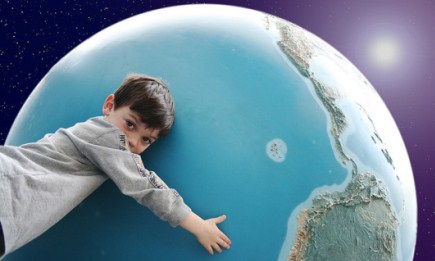The world in 2052

For the first time in over 40 years the “Club of Rome” publisheda
The Club of Rome is a non-profit organizationfounded in 1968. Nowadays, it consists of 100 intellectuals fromover 30 national and regional associations. The publication of itsmost recent study directly precedes the upcoming United NationsRio+20 Conference on Sustainable Development (
Predictions by the report
The report makes a number of remarkable predictions regardingfundamental characteristics of the world in 2052. Speaking at thepresentation of the report in Rotterdam, Professor Sanders saidthat “we need a system of governance that takes a more long-termview. It is unlikely that governments will pass necessaryregulation to force the markets to allocate more money into climatefriendly solutions, and we must not assume that markets will workfor the benefit of humankind.”
- Global population will peak at 8.1 billion humans in 2042,because of falling fertility in urban areas.
- Worldwide GDP will grow slower than expected. In 2050, globalGDP will only 2.2 larger than today.
- Productivity gains will also be lower than in the past as manyeconomies will reach their maximum capacity and social and climatedisruptions will impede further advancements.
- Developed rich countries like the U.S. will increasingly haveto deal with greater poverty and income inequality following the”triumph of financial capitalism”. Brazil, Russia, India, SouthAfrica and ten leading emerging economies (referred to as ‘BRISE’in the Report) will progress. All countries will face consequencesfrom a deteriorating environment.
- There will still be 3 billion poor in 2052.
- CO2 concentrations in the atmosphere will continue to grow andcause +2°C in 2052; temperatures will reach +2.8°C in 2080, whichmay well trigger self-reinforcing climate change.
The way forward
Apart from forecasting these fundamental variables, the reportalso offers a way forward. What goals should be pursued to create a”sustainable, equitable and ‘happier’ world”?
- Societal values, which are essential for a sustainable andequitable society, are fully reflected in all economicdecisions.
- The economies of the world reflect the value of natural andsocial capital, markets operate in a fair and transparent mannerand deliver the goods and services required for a sustainablesociety.
- A more equitable distribution of income both within and betweencountries.
- Access to meaningful work, which provides enough income to leada decent life, is guaranteed and recognized as an essential humanright. Job generation has become a top priority for allinvestments, costs for unemployment are considered indecision-making.
- Ecology is seen as a binding constraint for all forms of humanactivity and is
therefore managed in a manner which reflects its biophysicaland economic value. Never should the world be in overshoot. - Appropriate governance systems at a local, national and globallevel, which can manage the transition into an equitable andsustainable global world, are established.
Meest Gelezen
Vrouwen houden universiteit draaiende, maar krijgen daarvoor geen waardering
Wederom intimidatie van journalisten door universiteit, nu in Delft
Hbo-docent wil wel rolmodel zijn, maar niet eigen moreel kompas opdringen
‘Burgerschapsonderwijs moet ook verplicht worden in hbo en wo’
Raad van State: laat taaltoets nog niet gelden voor hbo-opleidingen


